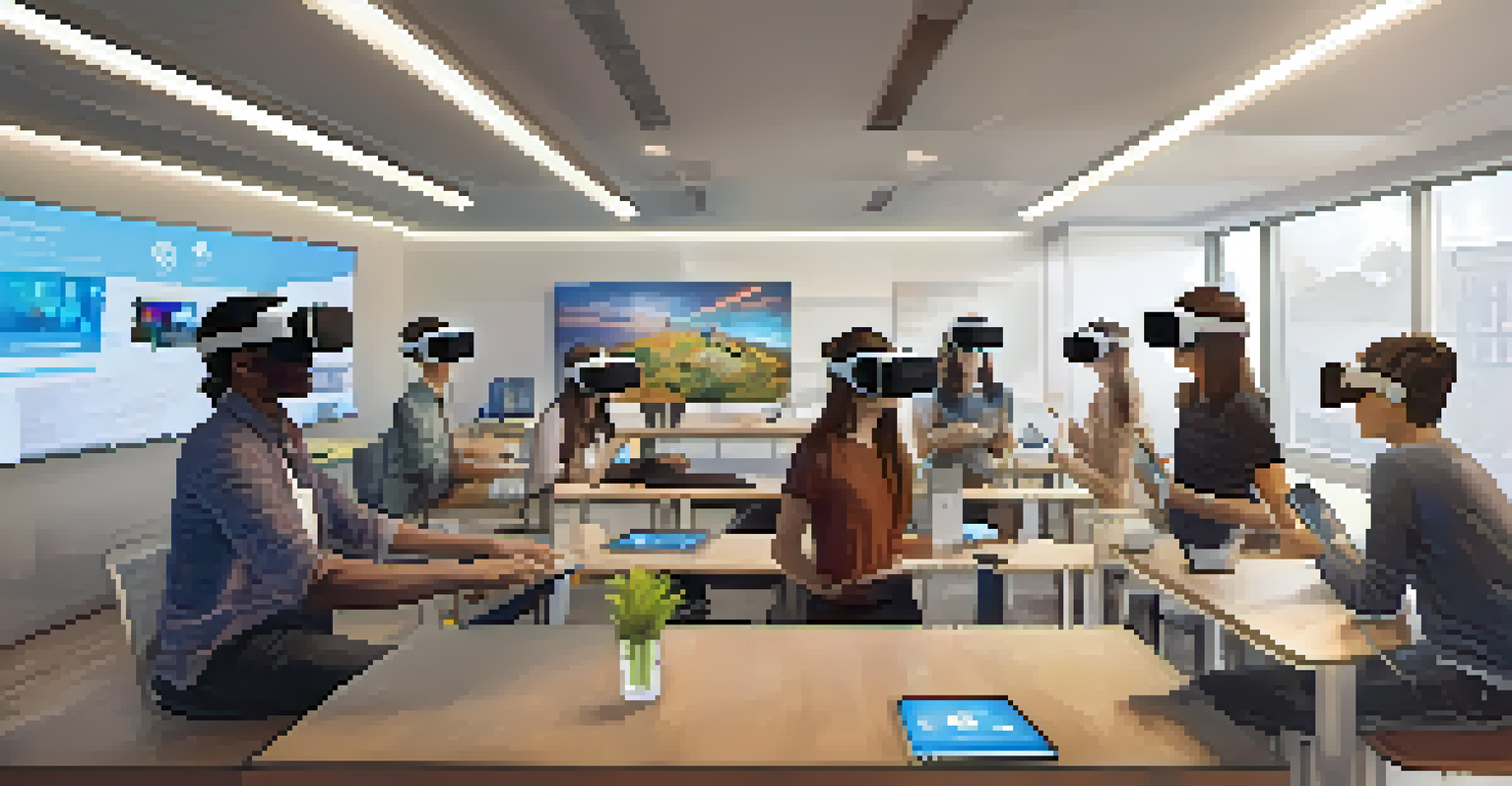Designing Curriculum with Global Perspectives in Mind

Understanding the Importance of Global Perspectives in Education
In today’s interconnected world, education must reflect the diversity of global experiences. Understanding different cultures, languages, and histories enriches the learning environment and prepares students for a globalized workforce. By incorporating global perspectives, educators can foster empathy and critical thinking, essential skills for navigating complex societal issues.
Education is the most powerful weapon which you can use to change the world.
Moreover, a curriculum that highlights global perspectives encourages students to see beyond their own experiences. This broadened worldview not only enhances academic learning but also promotes social consciousness. As students engage with various viewpoints, they develop a deeper appreciation for diversity and the importance of collaboration across cultures.
Ultimately, integrating global perspectives into education cultivates informed global citizens. These individuals are better equipped to tackle challenges such as climate change, social justice, and economic disparities, contributing positively to their communities and the world at large.
Key Elements of a Globally-Inspired Curriculum Design
Designing a curriculum with global perspectives involves several key elements. First, educators should incorporate diverse voices and experiences from around the world. This means including literature, historical events, and contemporary issues that represent various cultures, ensuring that students see themselves and others in what they learn.

Second, interdisciplinary approaches can enhance global learning. By connecting subjects such as history, geography, and science, students can understand how different disciplines intersect with global issues. For instance, exploring the impact of climate change through scientific, economic, and social lenses can provide a well-rounded perspective.
Global Perspectives Enrich Education
Incorporating diverse cultures and viewpoints enhances learning and prepares students for a globalized workforce.
Lastly, fostering critical thinking is crucial. Students should be encouraged to question and analyze differing viewpoints, discussing their implications in a global context. This approach not only deepens understanding but also equips students with the skills necessary to engage with complex global challenges.
Incorporating Technology to Enhance Global Learning
Technology plays a pivotal role in designing a curriculum that embraces global perspectives. Virtual classrooms and online resources allow students to connect with peers from around the world, facilitating cross-cultural exchanges. This interaction can ignite curiosity and foster understanding, as students learn directly from their global counterparts.
We need to give students a global perspective, so they understand the world they'll be living in and what they'll be facing.
Moreover, digital tools can provide access to a wealth of information and resources. From virtual reality experiences that transport students to different parts of the world to collaborative platforms that enable joint projects, technology can significantly enhance global learning opportunities. These experiences help students contextualize their learning in a broader global framework.
Finally, technology encourages self-directed learning. Students can explore topics of interest related to global issues at their own pace, engaging with content that resonates with them personally. This autonomy not only boosts motivation but also allows for deeper exploration of global perspectives.
Creating Engaging and Relevant Learning Experiences
To truly engage students, learning experiences must be relevant and relatable. Incorporating real-world issues into the curriculum allows students to see the significance of their studies. For example, discussing current events, such as international conflicts or environmental challenges, can stimulate meaningful conversations and inspire action.
Project-based learning is another effective strategy for creating engaging experiences. By working on projects that address global issues, students can apply their knowledge in practical ways. For instance, a project focused on sustainable development can lead students to research local solutions, fostering a sense of agency and responsibility.
Technology Enhances Global Learning
Digital tools facilitate cross-cultural exchanges and self-directed exploration of global issues.
Additionally, field trips, guest speakers, and community partnerships can enrich the curriculum. By connecting classroom learning to the outside world, students gain firsthand insights into global perspectives, making their education more dynamic and impactful.
Assessing Global Competence and Understanding
Assessment is key to understanding how well students grasp global perspectives. Traditional testing may not fully capture a student’s ability to engage with diverse viewpoints. Instead, educators should consider alternative assessment methods, such as reflective journals, group projects, and presentations, which allow students to express their understanding in varied ways.
Incorporating self-assessment and peer evaluation can also enrich the assessment process. Students reflecting on their own learning journeys and receiving feedback from classmates can deepen their understanding of global issues. This collaborative approach encourages a supportive learning environment where students learn from each other.
Furthermore, educators should provide opportunities for students to demonstrate their global competence in real-world scenarios. For instance, participating in international debates or community service projects can offer tangible experiences that highlight their learning and growth.
Challenges in Designing a Global Curriculum
While designing a curriculum with global perspectives is vital, it comes with its own set of challenges. One major hurdle is the integration of diverse content into an already packed curriculum. Educators may struggle to find the right balance between required standards and incorporating global perspectives, leading to potential pushback from stakeholders.
Additionally, educators may face varying levels of cultural competence among students. Not all students come with the same background knowledge, and some may require additional support to engage with global content effectively. Differentiating instruction to meet diverse needs can be a daunting task but is essential for fostering an inclusive learning environment.
Challenges in Global Curriculum Design
Integrating diverse content into an already packed curriculum poses significant challenges for educators.
Lastly, resources can also be a limitation. Access to quality materials that represent global perspectives may be scarce in some regions. Educators must be creative and resourceful, seeking out partnerships and utilizing technology to enhance their curriculum despite these limitations.
Strategies for Educators to Foster Global Perspectives
Educators play a crucial role in fostering global perspectives within their classrooms. First, continuous professional development is essential. By attending workshops, conferences, and training sessions focused on global education, teachers can stay informed about best practices and innovative strategies for curriculum design.
Second, collaboration among educators can enhance global learning opportunities. By sharing resources, lesson plans, and cultural insights, teachers can create a more cohesive and enriched curriculum. This collaboration can extend beyond the school, involving community members and organizations that bring global perspectives to the classroom.

Finally, educators should encourage a culture of curiosity and inquiry. By prompting students to ask questions and explore topics related to global issues, teachers can ignite a passion for learning that extends beyond the classroom. This environment nurtures students’ abilities to think critically and engage meaningfully with the world around them.